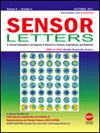An Image Reconstruction Algorithm with Experimental Validation for Electrical Impedance Tomography Imaging Applications
引用次数: 0
Abstract
In the Non-Invasive Bio Impedance Technique (NIBIT) a low current pulse with high frequency inserted between two electrodes of the object while measuring voltages from the other remaining electrodes with respect to the reference electrode. The electrode arrangement is defined in the form of cylindrical shapes of the surface of the phantom. After these arrangements, it inserts the current pulse and measures the voltages according to the selected data acquisition method of bio impedance. The presented algorithm analyzes and defines each obtained data sample from the used phantoms and also allows Image Reconstruction (IR) based on developed Graphical User interface (GUI) on MATLAB. The used IR approach is based on Tikhonov regularization and FEM. The FEM and Tikhonov regularization are mathematical approaches that deal with Forward Problem (FP) and Inverse Problem (IP) of images. In our approach, the FP solution is identified first in order to reconstruct the conductivity distribution through the EIT inverse solution. Thereafter, This FP is solved through the known current pulse of a given conductivity medium. Likewise, the IP is identified and solved through the boundary potential of the object. The end of the obtained result provides a comparable result for the used phantom according to its internal structure. This proposed technique is still reliable despite having some standardization issue according to the procedure.一种用于电阻抗断层成像的图像重建算法及实验验证
在非侵入性生物阻抗技术(NIBIT)中,在物体的两个电极之间插入一个高频的低电流脉冲,同时测量来自其他电极相对于参考电极的电压。电极的布置以所述模体表面的圆柱形形式定义。在这些安排之后,根据所选择的生物阻抗数据采集方法插入电流脉冲并测量电压。该算法分析并定义了从使用的幻影中获得的每个数据样本,并允许基于MATLAB开发的图形用户界面(GUI)进行图像重建(IR)。所采用的红外方法是基于吉洪诺夫正则化和有限元法。FEM和Tikhonov正则化是处理图像正问题(FP)和反问题(IP)的数学方法。在我们的方法中,首先确定FP解,以便通过EIT逆解重建电导率分布。然后,通过给定电导率介质的已知电流脉冲求解该FP。同样,IP是通过物体的边界势来识别和求解的。所得结果的最后,根据所用模型的内部结构,提供了一个可比较的结果。尽管该技术在操作过程中存在一些标准化问题,但仍然是可靠的。
本文章由计算机程序翻译,如有差异,请以英文原文为准。
求助全文
约1分钟内获得全文
求助全文
来源期刊

Sensor Letters
工程技术-电化学
自引率
0.00%
发文量
0
审稿时长
6 months
期刊介绍:
The growing interest and activity in the field of sensor technologies requires a forum for rapid dissemination of important results: Sensor Letters is that forum. Sensor Letters offers scientists, engineers and medical experts timely, peer-reviewed research on sensor science and technology of the highest quality. Sensor Letters publish original rapid communications, full papers and timely state-of-the-art reviews encompassing the fundamental and applied research on sensor science and technology in all fields of science, engineering, and medicine. Highest priority will be given to short communications reporting important new scientific and technological findings.
 求助内容:
求助内容: 应助结果提醒方式:
应助结果提醒方式:


